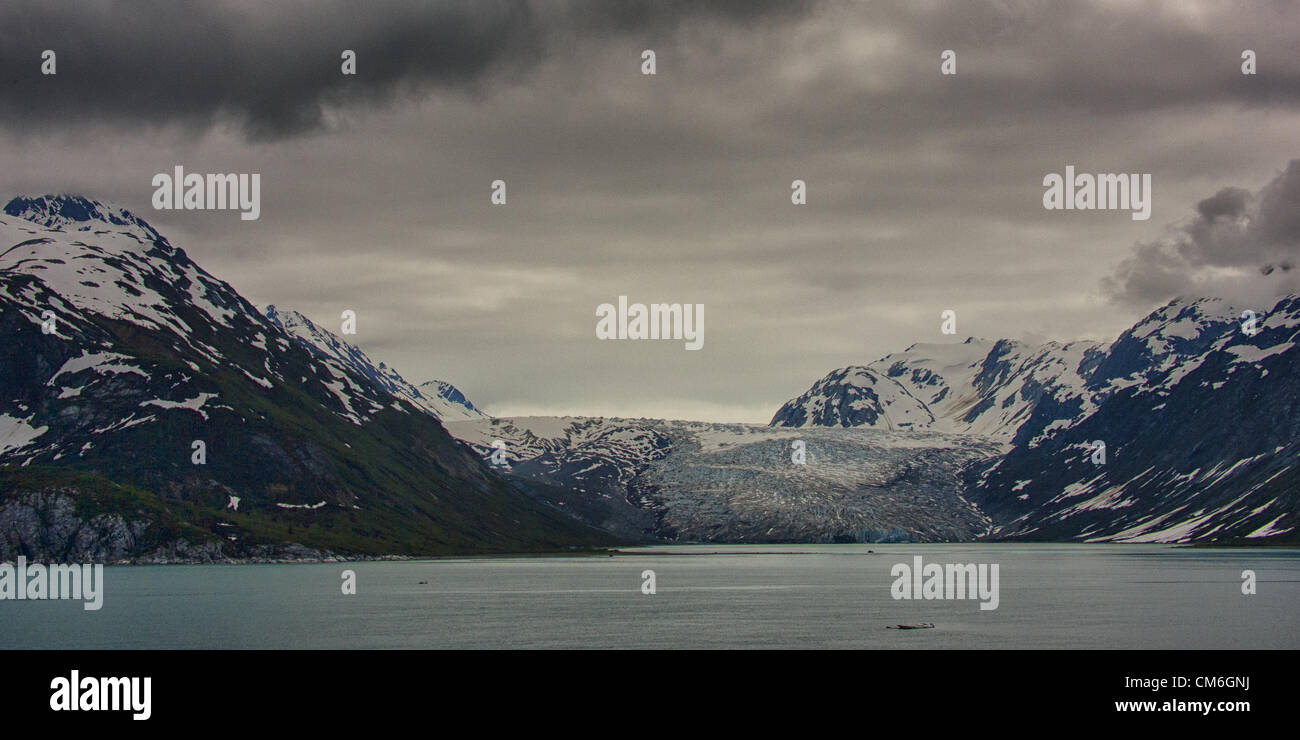July 3, 2012 - Glacier Bay, Alaska, US - The impressive Reid Glacier in Glacier Bay, surrounded by the mountains of the Fairweather Range, has its origins in the Brady Icefield. At the waters edge, its width is 0.75 miles (1.21Â km), and its face rises to a height of 150 feet (46Â m). Its fast rate of retreat has turned it from a tide water to terrestrial glacier, as glacial sediment deposits have gradually filled the eastern and western margins at its inlet. Glacier Bay covers 3.3 million acres (1.3 million hectares) of rugged mountains, dynamic glaciers, temperate rainforest, wild coastlines

Image details
Contributor:
ZUMA Press, Inc. / Alamy Stock PhotoImage ID:
CM6GNJFile size:
12.9 MB (669.5 KB Compressed download)Releases:
Model - no | Property - noDo I need a release?Dimensions:
3000 x 1500 px | 25.4 x 12.7 cm | 10 x 5 inches | 300dpiDate taken:
3 July 2012Photographer:
ZUMA PressMore information:
This image could have imperfections as it’s either historical or reportage.
July 3, 2012 - Glacier Bay, Alaska, US - The impressive Reid Glacier in Glacier Bay, surrounded by the mountains of the Fairweather Range, has its origins in the Brady Icefield. At the waters edge, its width is 0.75 miles (1.21Â km), and its face rises to a height of 150 feet (46Â m). Its fast rate of retreat has turned it from a tide water to terrestrial glacier, as glacial sediment deposits have gradually filled the eastern and western margins at its inlet. Glacier Bay covers 3.3 million acres (1.3 million hectares) of rugged mountains, dynamic glaciers, temperate rainforest, wild coastlines, deep sheltered fjords and wildlife. A highlight of the Alaskan Inside Passage and part of a 25-million acre (10.1 million hectares) World Heritage Site, it is the largest UNESCO protected biosphere in the world. Almost half a million tourists visit each year, mostly cruise ship passengers. (Credit Image: © Arnold Drapkin/ZUMAPRESS.com)